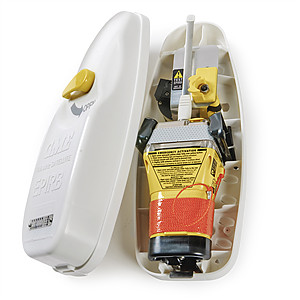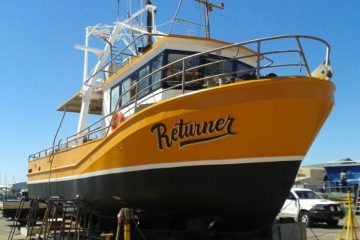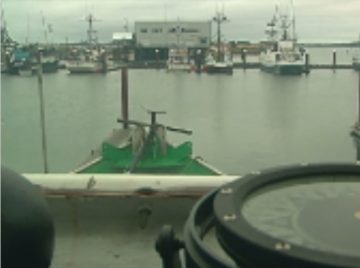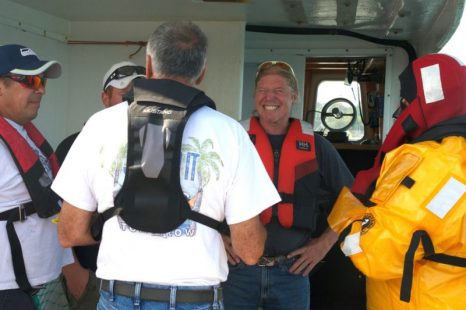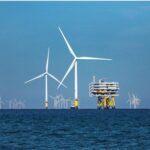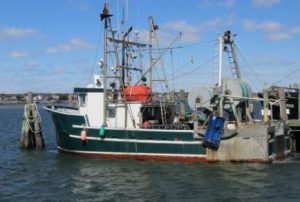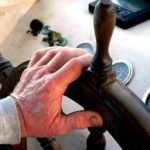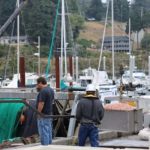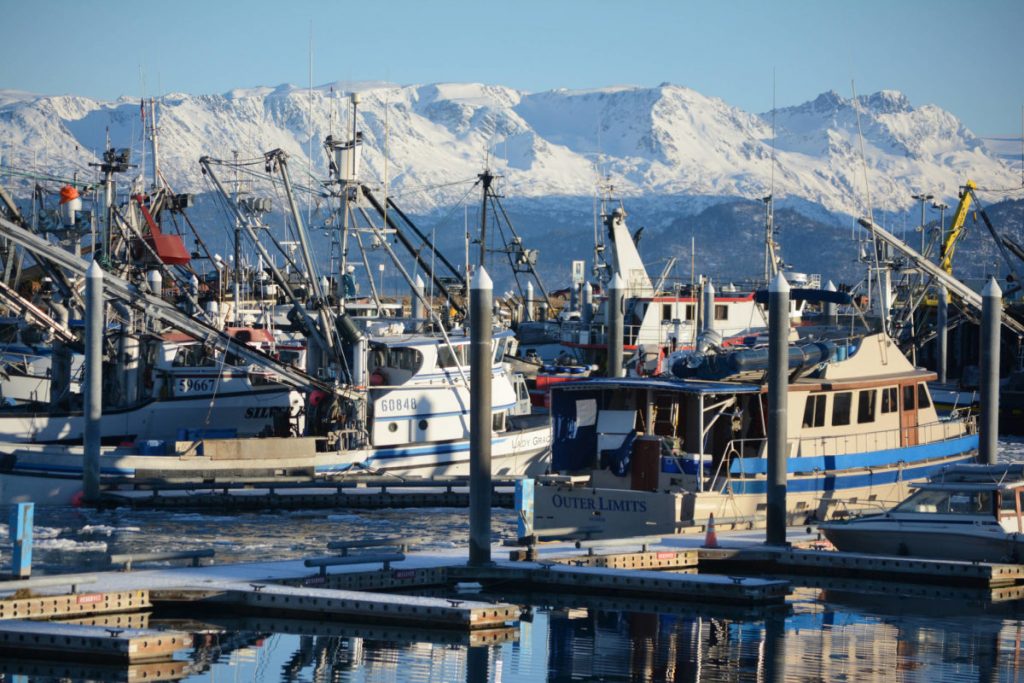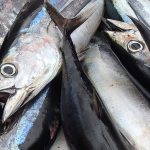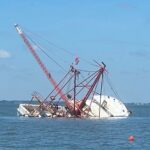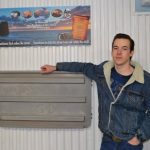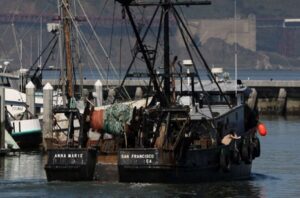Tag Archives: Marine Safety
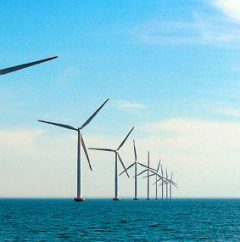
Coast Guard study of travel routes underway
The Coast Guard has begun a study of vessel traffic in and around the seven offshore energy lease areas south of the Islands to determine if any new vessel travel routes are necessary to improve navigational safety, according to Tuesday’s notice in the Federal Register.,,, “The study’s future results will provide important information for orderly development of the New England offshore wind area in a way that ensures safe navigation for all mariners.”,,, A vessel transit layout announced in September was from a Massachusetts state government-organized fisheries working group on offshore wind, with one east-west route, one north-south route and one diagonal route. But in early December, Rhode Island commercial fishermen said they needed wider corridors, in the range of 4-miles wide, to safely maneuver their vessels. >click to read<13:11
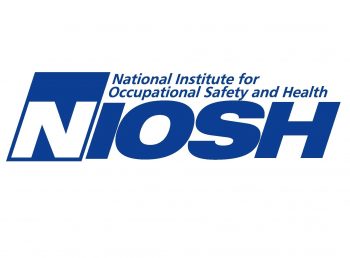
NIOSH Announces Availability of $6 Million in Commercial Fishing Safety Research and Training Grants
The National Institute for Occupational Safety and Health (NIOSH), in partnership with the U.S. Coast Guard (USCG), announced the availability of $6 million dollars in grant funding for commercial fishing safety research and training. The grants, which are supported and administered by NIOSH, will provide funding to qualified individuals in academia, members of non-profit organizations, municipalities, and businesses involved in the fishing and maritime industries. The funding will support research on improving the occupational safety of workers in the commercial fishing industry and critical training for this high-risk occupation. >click to read<10:52
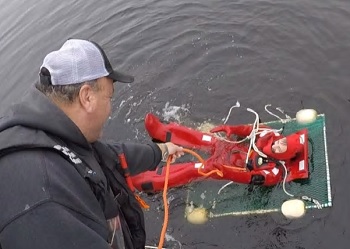
Fishermen train for a rescue in an industry full of danger
The thick red neoprene of my survival suit pressed my nose flat against my face, as I flopped into the makeshift rescue rig. A winch above strained to pull me from the dark water. The rope snapped. I plunged back down, spat out salty water and bobbed to the surface. “And that’s why we do the drills,” said Matthew Duffy, a safety advisor with the Fisheries Safety Association of Nova Scotia. Duffy stood on the boat above me in Port Mouton, N.S., next to a sheepish captain who later vowed to buy a new rope. On an adjacent wharf, dozens of fishermen watched our mock rescue. >click to read<12:41
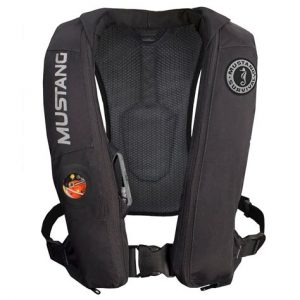
PFD’s – A case for life jackets for all: By Roger R. Locandro
Andre Penton of Fogo Island died June 27 this year in a boating accident on a pond not far from his home in Joe Batt’s Arm. The Fogo Island community mourns his death, with condolences to his wife Rita, his three sons and their families. Although his death was not directly due to drowning, it brought back my own memories of dangers on the water.,, People drown. Don’t take any chances on or around the water. I took chances and almost paid for it with my life. Some years ago, I was commercial seining for salmon in the Gulf of Alaska, out of Cordova. >click to read<22:49
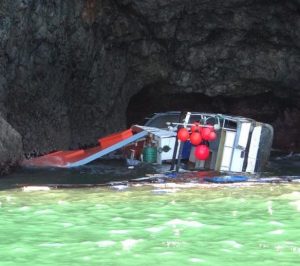
Asleep at the Wheel: Fatigue Led to Capsize of Fishing Ship and $27,200 Fine
Crew fatigue led to the grounding and loss of commercial fishing vessel Jan and its owner, Wild Fish (NZ) Limited, being fined $27,200 following prosecution by Maritime NZ. Maritime NZ Northern Regional Manager, Neil Rowarth, said the sole helmsman at the time of the grounding, a 17-year-old deckhand, fell asleep soon after going on watch in the early hours of 11 January 2016. The helmsman had worked a full day, slept for between only one hour and three-and-a-quarter hours, and was then woken to take his turn on watch. He had never before been on watch by himself at night. >click to read<19:38
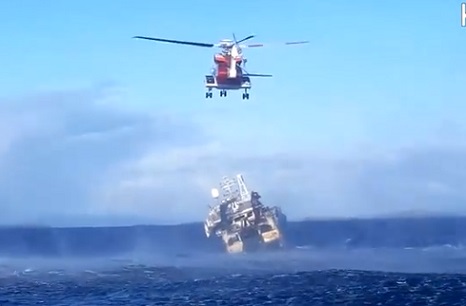
Crew of sunken ‘Ocean Way’ was unprepared for emergency
On the morning of 3 March 2017, the twin-rigged trawler Ocean Way foundered 18 nautical miles north-east of Lerwick, Scotland, after suffering a flood in its aft compartment/accommodation space. The flood was almost certainly the result of hull damage caused when the port trawl door struck the hull during recovery of the gear. Despite the crew’s efforts to bring the flooding under control using fixed and portable pumps, the ingress of water exceeded the pumping effort and Ocean Way succumbed to overwhelming down flooding when the open accommodation space escape hatch submerged. >click to read<12:37
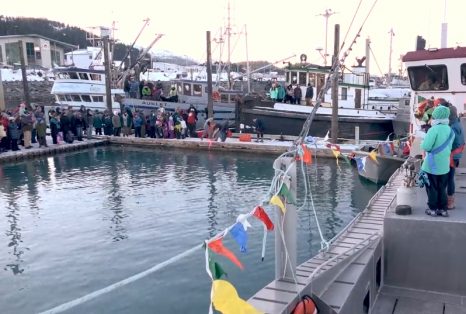
Making Safety Training Fun! Cordova Community Taps Skills and Humor to Highlight Marine Safety
Marine safety is never far from coastal Alaskans’ thoughts, where commercial fishing and other marine trades are their livelihood. This holds true in Cordova, a community of 2,200 on Prince William Sound. Every February Cordovans enjoy displaying and testing their cold water safety skills during the Iceworm Survival Suit Races by donning survival suits, swimming to a life raft, and boarding the raft—all of which is more difficult than it sounds. This year ten teams joined in, including a visiting US Coast Guard team from the Homer-based buoy tender Hickory. >click to read< Survival Suit Race 2018 – the video >click to watch< 09:42

OSHA releases fact sheet on shipboard pedestal crane safety
A new fact sheet from OSHA is intended to help protect workers from hazards associated with shipboard pedestal cranes. Common on commercial fishing vessels, pedestal cranes move and load materials and catches. When a pedestal crane’s components, or their operation, fail, injuries and fatalities can occur. Failure can result from inadequate maintenance, unapproved modifications, improper use, lack of training, and improper inspections, the sheet states. Proper training, regular inspections and working within manufacturers’ guidelines can reduce the risks. The fact sheet covers inspection, operation and training requirements, as well as OSHA certification requirements, click here to read the story 08:03 read the fact sheet here
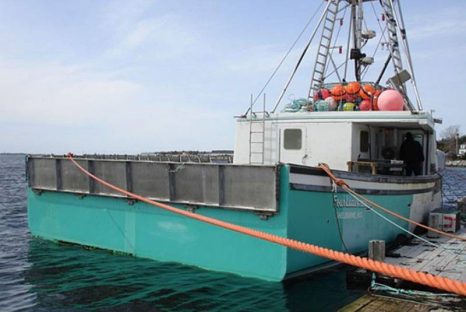
Lives on the line when fishermen head out to sea
It’s an old song. But it seems we have to keep singing it until something changes. Two weeks ago, The Globe and Mail ran a feature story on the fishing industry, pointing out, as others have for years, that the industry is one of the most dangerous in Canada. The newspaper mined statistical data to show just how dangerous the profession is: out of all professions in Canada, three different fishing occupations were in the top 10 of Canada’s most dangerous. Fishing vessel deckhand was the second-most dangerous occupation in the country. Fishing vessel skippers and fishers came in at fifth place, and aquaculture and marine harvest labourers ranked sixth. click here to read the story 09:06

Sea Change – The Struggle for Safety in Fishing, Canada’s Deadliest Industry
Despite safety gains in many other industries, fishing continues to have the highest fatality rate of any employment sector in Canada. Even as the long lists of the dead continue to grow, regulators and policy-makers are challenged by the grim fatalism that pervades a world in which generations of fishermen have gone out into the sea and, all too often, not come home. In the tidy port town of Lunenburg, N.S., near the ocean’s edge, a touching memorial lists the fishermen who have lost their lives at sea since 1890. “Dedicated to the memory of those who have gone down to the sea in ships,” says the inscription on a slab of black granite, and to those who “continue to occupy their business in the great waters.” click here to read the story 12:29
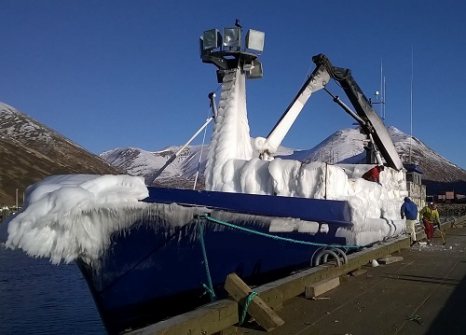
USCG: Remain Upright by Fully Understanding Vessel Stability
The need for operators to understand their vessel’s Stability Instructions (SI) cannot be overstated. It is important to understand the document. Operators and crew should seek out opportunities to further their knowledge of stability via courses, training, workshops, and visits from Naval Architects. They should also take advantage of other various initiatives, both mandatory and voluntary, to discuss and compare a vessel’s current SI to the actual loaded condition prior to departing port. An independent review of a vessel’s loaded condition, equipment, and operations can often provide important insights. click here to read the story 10:21
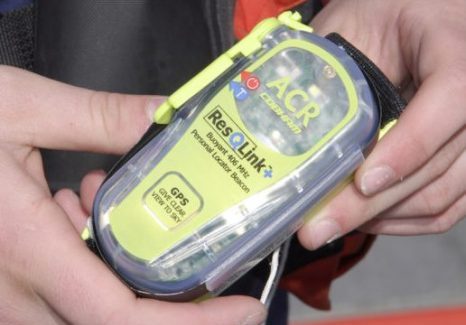
USCG Calls For PLBs On EVERY Life Jacket
In the United States Coast Guard’s upcoming El Faro investigation report, Captain Jason Neubauer USCG, Chairman of the Marine Board of Investigation, will recommend that all Personal Flotation Devices on oceangoing commercial vessels be outfitted with a Personal Locator Beacon.,,, A PLB (personal locator beacon) is a specific type of EPIRB that is typically smaller, less expensive, has a shorter battery life and unlike a proper EPIRB is registered to a person rather than a vessel. click here to read the story 09:41

It started as a normal day…
When Life Cell inventor Scott Smiles went to sea for what was supposed to be a short pleasure trip, the result was far from what he had expected. Something went catastrophically wrong – and he and his friend Rick and their respective sons Riley and Ryan found themselves in the water, clinging to a cool box and having grabbed a hand-held radio from the boat before it went down. ‘He was struck by the fact that all the safety equipment was there on board – but the problem was that it was all kept in different places,’ said Sally Dale of Pinpoint Electronics, the European distributor for the Life Cell, the innovative safety kit that resulted from the startlingly sudden loss of Scott’s boat. click here to read the story 13:55
Lifejacket probe widened following Fishing Vessel Louisa fishermen deaths
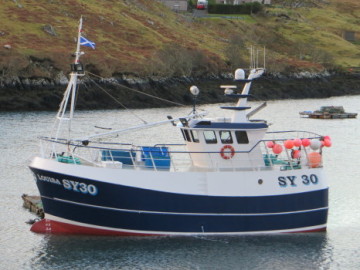 An investigation into the performance of lifejackets worn by three fishermen who died after their boat sank has been widened out to other parts of Europe. The men lost their lives after abandoning the crab boat Louisa off Mingulay last year. The coastguard and maritime accident investigators have been examining the lifejackets and how they are tested. Partners agencies elsewhere in Europe have been contacted about a wider research and testing programme. The survival aids involved in the Louisa incident are understood to be widely used.,,On the latest developments, the Maritime and Coastguard Agency said: “This is the first time we have had a concern identified with an in-service lifejacket and we are investigating urgently. click here to read the story 20:21
An investigation into the performance of lifejackets worn by three fishermen who died after their boat sank has been widened out to other parts of Europe. The men lost their lives after abandoning the crab boat Louisa off Mingulay last year. The coastguard and maritime accident investigators have been examining the lifejackets and how they are tested. Partners agencies elsewhere in Europe have been contacted about a wider research and testing programme. The survival aids involved in the Louisa incident are understood to be widely used.,,On the latest developments, the Maritime and Coastguard Agency said: “This is the first time we have had a concern identified with an in-service lifejacket and we are investigating urgently. click here to read the story 20:21
Re-examining safety practices in the wake of this year’s commercial fishing deaths
 “It’s time for a checkup from the neck up” — meaning an industry time-out to evaluate fishing operations and behaviors — advises Jerry Dzugan, director of the Sitka-based Alaska Marine Safety Education Association for over 30 years. Dzugan was speaking in response to the 11 fishing deaths that have occurred in Alaska so far this year. It’s the most in 13 years and follows a 76 percent decrease in commercial fishing fatalities since the 1980s. “The causes are still capsizing, sinkings, swampings and man overboards (MOBs). They haven’t changed much,” Dzugan said. “People need to step back and focus on the basics, such as making sure your vessel is stable and watertight, and that your crew is protected from man overboards.” click here to read the story 11:37
“It’s time for a checkup from the neck up” — meaning an industry time-out to evaluate fishing operations and behaviors — advises Jerry Dzugan, director of the Sitka-based Alaska Marine Safety Education Association for over 30 years. Dzugan was speaking in response to the 11 fishing deaths that have occurred in Alaska so far this year. It’s the most in 13 years and follows a 76 percent decrease in commercial fishing fatalities since the 1980s. “The causes are still capsizing, sinkings, swampings and man overboards (MOBs). They haven’t changed much,” Dzugan said. “People need to step back and focus on the basics, such as making sure your vessel is stable and watertight, and that your crew is protected from man overboards.” click here to read the story 11:37
TSB recommends mandatory safety measures following investigation
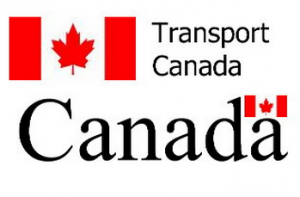 Drawing attention to the wide range of safety risks that persist in the fishing industry, the Transportation Safety Board of Canada (TSB) today released its investigation report (M16A0140) into the June 2016 fatal capsizing of fishing vessel C19496NB near Miller Brook Wharf, Salmon Beach, New Brunswick.,,, Therefore, the Board recommends that the government of New Brunswick and WorkSafeNB require persons to wear suitable personal flotation devices at all times when on the deck of a commercial fishing vessel or on board a commercial fishing vessel without a deck or deck structure and that WorkSafeNB ensure that programs are developed to confirm compliance. click here to read the story 13:42
Drawing attention to the wide range of safety risks that persist in the fishing industry, the Transportation Safety Board of Canada (TSB) today released its investigation report (M16A0140) into the June 2016 fatal capsizing of fishing vessel C19496NB near Miller Brook Wharf, Salmon Beach, New Brunswick.,,, Therefore, the Board recommends that the government of New Brunswick and WorkSafeNB require persons to wear suitable personal flotation devices at all times when on the deck of a commercial fishing vessel or on board a commercial fishing vessel without a deck or deck structure and that WorkSafeNB ensure that programs are developed to confirm compliance. click here to read the story 13:42
Nova Scotia Fishermen’s Association Relies on Mustang Survival as Part of Major Safety Investment
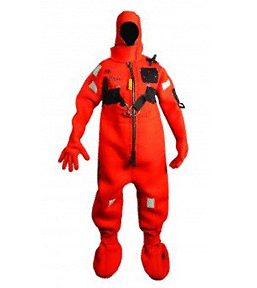 Mustang Survival®, the North American brand known for innovative solutions for the most demanding marine environments, is pleased to announce that the Gulf Nova Scotia Fleet Planning Board (GNSFPB) has made another round of major investments in safety equipment which includes 1,200 Mustang Survival immersion suits. As part of a $1.3 million spend, the GNSFPB is aligning with new safety requirements for commercial fishing vessels introduced by Transport Canada, which will go into effect this summer.,, Leonard LeBlanc, GNSFB’s Managing Director, in partnership with Shippagan Enterprises, spearheaded the purchase of safety equipment for use by 600 inshore fishermen in an area that extends from the New Bruswick boarder to the tip of Cape Breton in the Southern Gulf of St. Lawrence. click here to read the story 08:43
Mustang Survival®, the North American brand known for innovative solutions for the most demanding marine environments, is pleased to announce that the Gulf Nova Scotia Fleet Planning Board (GNSFPB) has made another round of major investments in safety equipment which includes 1,200 Mustang Survival immersion suits. As part of a $1.3 million spend, the GNSFPB is aligning with new safety requirements for commercial fishing vessels introduced by Transport Canada, which will go into effect this summer.,, Leonard LeBlanc, GNSFB’s Managing Director, in partnership with Shippagan Enterprises, spearheaded the purchase of safety equipment for use by 600 inshore fishermen in an area that extends from the New Bruswick boarder to the tip of Cape Breton in the Southern Gulf of St. Lawrence. click here to read the story 08:43
$1.3-million for new safety gear coming for 600 N.S. fishermen
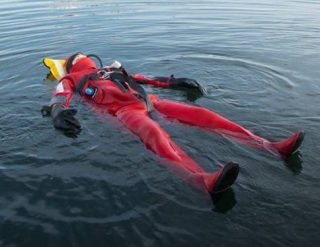 The Gulf Nova Scotia Fleet Planning Board is buying $1.3-million worth of safety equipment for 600 fishermen, it announced Friday. The equipment purchase includes 1,200 immersion suits, 600 emergency position-indicating radio beacons and 100 additional personal flotation devices. The Fleet Planning Board will also buy an automatic electronic defibrillator for each wharf in the Gulf of Nova Scotia. “We hope we never have to use this new equipment,” the board’s managing director, said in a news release. “But if it saves just one life then it was money very well spent.”,,, Click here to read the story 17:11
The Gulf Nova Scotia Fleet Planning Board is buying $1.3-million worth of safety equipment for 600 fishermen, it announced Friday. The equipment purchase includes 1,200 immersion suits, 600 emergency position-indicating radio beacons and 100 additional personal flotation devices. The Fleet Planning Board will also buy an automatic electronic defibrillator for each wharf in the Gulf of Nova Scotia. “We hope we never have to use this new equipment,” the board’s managing director, said in a news release. “But if it saves just one life then it was money very well spent.”,,, Click here to read the story 17:11

MAIB Report: Fisherman’s desperate attempts to save life of brother dragged beneath the waves off coast near Hartlepool
An experienced young fisherman became fatally entangled in ropes when unsafe practices were being carried out onboard a commercial fishing boat, a report has concluded. Lee Renney was dragged under water while working on the Pauline Mary off the coast of Hartlepool last September. Today, the Maritime Accident Investigation Branch has issued a damning report about the fatal accident. The 22-year-old was working alongside his brother, who was the skipper of the boat, when he was pulled overboard as he was dropping the lobster pots. Investigators said the brothers – both experienced fishermen from Hartlepool – had only been working on the Pauline Mary for two days and were laying out the pots for the first time from the vessel. click here to read the story 13:44
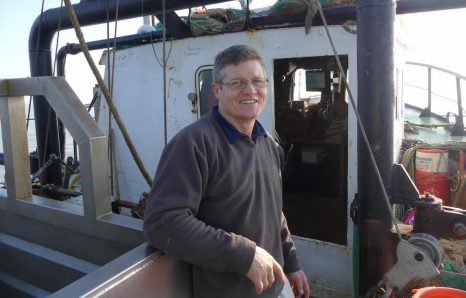
What the hell ha’ you done?
Jeffery Melton fishes from Lowestoft on the English east coast and is only too aware of fishing living up to its reputation as the most dangerous profession – and he forms part of the statistics. Fishing singlehanded aboard his 14m beamer Serene Dawn LT-7 in the Wash in May 2015, a freak set of circumstances combined to render this well-known, hugely experienced and much admired East Anglian fisherman suddenly and violently disabled in an horrific, split-second trauma, while towing for shrimps some miles off the North Norfolk coast. Eighteen months and eleven operations later, he’s back fishing and I joined him last week aboard the Serene Dawn to hear his story, observe the onboard routines and importantly for me, fish for one of tastiest seafood gems in the sea, brown shrimps (Crangon crangon). click here to read the story 09:50
Maine Fisherman details nearly losing his hand, amazing recovery
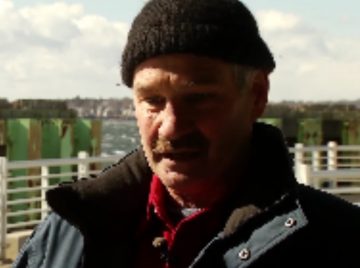 Nearly two months ago, a scallop fisherman got his lower arm caught in a hydraulic winch. It nearly took his hand off. Doctors were able to re-attach it, in one of the most difficult surgeries they’d ever performed. In 35 years of fishing off the coast of Maine, Rick Callow says he’s been injured many times, but nothing like what happened to him seven weeks ago on his fishing boat, the E Cosi. He and his crew were using a winch to haul in a catch of scallops when his glove got caught in the capstan, the revolving cylinder used to wind the cable. “It jerked my hand towards the capstan,” Callow said. “Pinched my glove in there, just the tip of my index finger.” Seconds later, the machine was ripping through his lower arm and hand. Video, read the rest of the story here 11:05
Nearly two months ago, a scallop fisherman got his lower arm caught in a hydraulic winch. It nearly took his hand off. Doctors were able to re-attach it, in one of the most difficult surgeries they’d ever performed. In 35 years of fishing off the coast of Maine, Rick Callow says he’s been injured many times, but nothing like what happened to him seven weeks ago on his fishing boat, the E Cosi. He and his crew were using a winch to haul in a catch of scallops when his glove got caught in the capstan, the revolving cylinder used to wind the cable. “It jerked my hand towards the capstan,” Callow said. “Pinched my glove in there, just the tip of my index finger.” Seconds later, the machine was ripping through his lower arm and hand. Video, read the rest of the story here 11:05
There is a GoFundMe page set up to help with the medical costs. Some of the pictures on that site are graphic.
New Man Overboard Prevention and Sea Survival Course for Fishermen
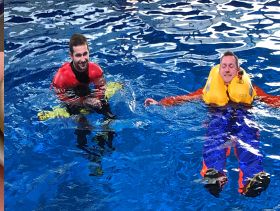 A ground breaking new pilot training course for fishermen aimed at preventing man overboard incidents and improving survival and recovery procedures has just been completed at the RNLI’s Training College in Poole, Dorset. The RNLI, working in conjunction with the UK fishing industry, has developed the two-day training course to better reflect real-life sea conditions so as to ensure fishermen are fully aware of the dangers and challenges of man overboard situations. The training pilot featured a variety of different scenarios, including enabling the participants to compare the differences of being in the water with and without survival gear. The challenges of recovering a man overboard wearing a personal flotation device were also practised, including self-recovery for the single boat fisherman and for those who work as part of a crew. Skipper Peter Bruce from the fishing vessel Budding Rose, who took part in the training, said that the two day course had been incredibly useful. “I hope that I can pass on some of the knowledge gained to my own crew and I believe that fishermen’s training should change to be more in line with the environment we work in,” he said. Read the story here 10:23
A ground breaking new pilot training course for fishermen aimed at preventing man overboard incidents and improving survival and recovery procedures has just been completed at the RNLI’s Training College in Poole, Dorset. The RNLI, working in conjunction with the UK fishing industry, has developed the two-day training course to better reflect real-life sea conditions so as to ensure fishermen are fully aware of the dangers and challenges of man overboard situations. The training pilot featured a variety of different scenarios, including enabling the participants to compare the differences of being in the water with and without survival gear. The challenges of recovering a man overboard wearing a personal flotation device were also practised, including self-recovery for the single boat fisherman and for those who work as part of a crew. Skipper Peter Bruce from the fishing vessel Budding Rose, who took part in the training, said that the two day course had been incredibly useful. “I hope that I can pass on some of the knowledge gained to my own crew and I believe that fishermen’s training should change to be more in line with the environment we work in,” he said. Read the story here 10:23
Man-Overboard Transmitter becomes new standard
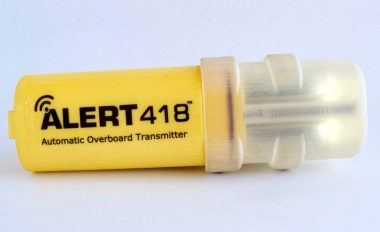 Emerald Marine Products announces the release of the ALERT418™ Man-Overboard Transmitter. Made in the USA, the enhanced unit is based on the company’s proven ALERT2 Transmitter, and is compatible with its Man-Overboard alarm system receiver and portable direction finder. Designed for working mariners, the ALERT418 Man-Overboard Transmitter is smaller and lighter than its predecessor: only 4.25″ L x 1.5″ W x 1″ D and 3.6 oz. For normal working conditions, it’s worn attached to a PFD. When it’s immersed in water, the reliable ALERT418 Man-Overboard Transmitter automatically sends a signal to the receiver. There’s no delay, as with AIS, so crew are instantly notified and can initiate an immediate man overboard rescue. The system can also set a waypoint or other digital action, and can be wired to kill the engine(s), making it ideal for solo fishermen. Link 13:01
Emerald Marine Products announces the release of the ALERT418™ Man-Overboard Transmitter. Made in the USA, the enhanced unit is based on the company’s proven ALERT2 Transmitter, and is compatible with its Man-Overboard alarm system receiver and portable direction finder. Designed for working mariners, the ALERT418 Man-Overboard Transmitter is smaller and lighter than its predecessor: only 4.25″ L x 1.5″ W x 1″ D and 3.6 oz. For normal working conditions, it’s worn attached to a PFD. When it’s immersed in water, the reliable ALERT418 Man-Overboard Transmitter automatically sends a signal to the receiver. There’s no delay, as with AIS, so crew are instantly notified and can initiate an immediate man overboard rescue. The system can also set a waypoint or other digital action, and can be wired to kill the engine(s), making it ideal for solo fishermen. Link 13:01

PANBO Blog: McMurdo SmartFind G8 AIS EPIRB, first of many, PLBs too?
Let’s first note that McMurdo’s trailblazing SmartFind G8 AIS EPIRB still awaits FCC approval and probably won’t be for sale in the U.S. until spring (along with its more conventional E8 and G8 siblings). But McMurdo has definitely developed this useful combination of local and global rescue beacon, other manufacturers may have AIS EPIRBs in the works, and I’ve got some details about how they’ll work. I also have some safety tips from an acquaintance who just dramatically experienced the effectiveness of a current ACR EPIR,,, The AIS component of coming AIS EPIRBs like the McMurdo SmartFind G8 is similar to what has already been developed for AIS SARTs and personal MOB beacons. Story by Ben Ellison on Read the rest here 15:21
Will lobstermen/fishermen wear PFDs?
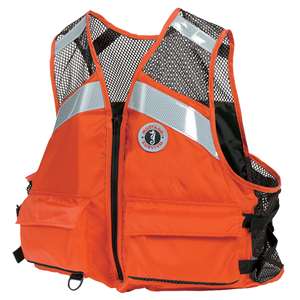 Think of the Maine lobsterman, and a few iconic images come to mind: a rugged boat with a wire trap on the rail; gloved hands holding a thrashing lobster and a gauge to measure whether it’s of legal size; a salty-looking fisherman wearing a T-shirt, oil pants and rubber boots, but no PFD (personal flotation device) or life jacket. According to an NEC report, fishermen generally described themselves as being proactive about safety whenever possible. Virtually all boats carry and maintain the safety gear required by the U.S. Coast Guard. A few years ago, many lobstermen began rigging rope ladders off the sterns of their boats to help them climb back on if they went overboard, and some run a line under the rail to a “kill switch” they can tug to shut off the engine if they are being pulled overboard. Lobstermen cited several reasons for their reluctance to wear PFD’s,, Read the rest here 11:04
Think of the Maine lobsterman, and a few iconic images come to mind: a rugged boat with a wire trap on the rail; gloved hands holding a thrashing lobster and a gauge to measure whether it’s of legal size; a salty-looking fisherman wearing a T-shirt, oil pants and rubber boots, but no PFD (personal flotation device) or life jacket. According to an NEC report, fishermen generally described themselves as being proactive about safety whenever possible. Virtually all boats carry and maintain the safety gear required by the U.S. Coast Guard. A few years ago, many lobstermen began rigging rope ladders off the sterns of their boats to help them climb back on if they went overboard, and some run a line under the rail to a “kill switch” they can tug to shut off the engine if they are being pulled overboard. Lobstermen cited several reasons for their reluctance to wear PFD’s,, Read the rest here 11:04






